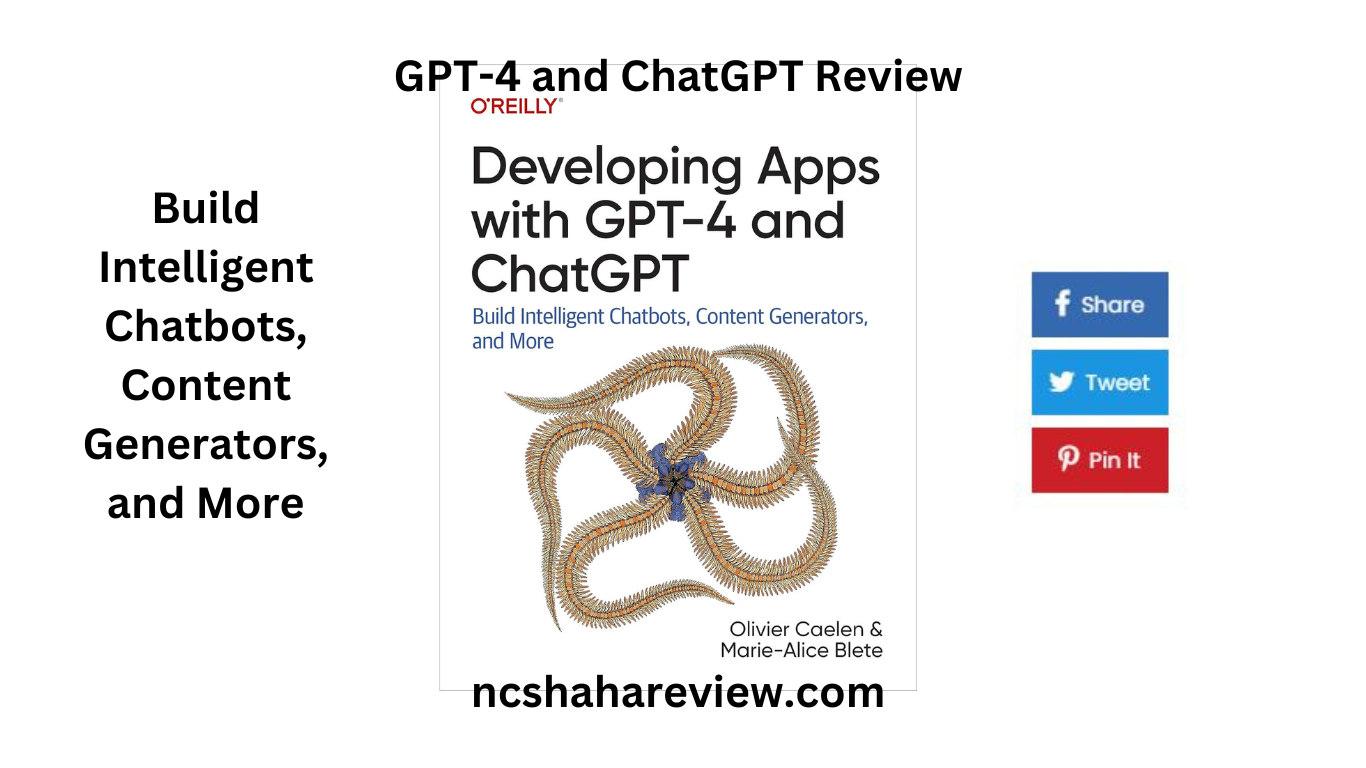Introduction
Overview of GPT-4 and ChatGPT
Artificial Intelligence (AI) has been making significant strides, and among the forefront technologies is OpenAI’s GPT-4. GPT-4, or Generative Pre-trained Transformer 4, is a state-of-the-art language model that has revolutionized the field of natural language processing (NLP). Alongside GPT-4 is ChatGPT, a fine-tuned model designed for conversational tasks. Together, they represent a powerful toolkit for developers aiming to create intelligent applications.
Importance of AI in Modern App Development
AI’s role in modern app development cannot be overstated. It enhances user experiences through intelligent features, automates repetitive tasks, and opens new avenues for innovation. From chatbots that provide customer support to content generators that produce high-quality articles, AI is at the core of many groundbreaking applications.
Objectives of the Article
This article aims to provide a comprehensive guide on developing apps using GPT-4 and ChatGPT. It will cover everything from understanding the technology to practical steps for implementation, benefits, challenges, and future prospects.
Understanding GPT-4 and ChatGPT
What is GPT-4?
GPT-4 is the fourth iteration of OpenAI’s Generative Pre-trained Transformer model. It’s designed to understand and generate human-like text based on the input it receives. Built on deep learning techniques, GPT-4 is trained on diverse datasets, enabling it to perform a wide range of language tasks with impressive accuracy and fluency.
How ChatGPT Works
ChatGPT is a derivative of GPT-4, fine-tuned specifically for conversational applications. It works by predicting the next word in a sentence based on the context provided by previous words. This allows it to generate coherent and contextually relevant responses, making it ideal for creating chatbots and other interactive applications.
Differences Between GPT-4 and Previous Versions
GPT-4 boasts several improvements over its predecessors, including:
- Enhanced Language Understanding: More accurate comprehension of context and nuances.
- Larger Model Size: Increased parameters for better performance.
- Improved Training Data: Trained on a more diverse and extensive dataset.
- Better Fine-tuning: Enhanced ability to adapt to specific tasks through fine-tuning.
Technical Specifications
Architecture of GPT-4
GPT-4 is built on a transformer architecture, which consists of encoder-decoder layers designed to process and generate text efficiently. Its architecture allows it to handle complex language tasks and generate high-quality text.
Key Features and Improvements
Some of the key features and improvements in GPT-4 include:
- Contextual Awareness: Better understanding of context in long passages.
- Multilingual Capabilities: Support for multiple languages with high proficiency.
- Customization: Enhanced ability to fine-tune the model for specific applications.
- Robustness: Improved performance in understanding and generating text across various domains.
Technical Requirements for Development
To develop applications using GPT-4, the following technical requirements are necessary:
- Computational Resources: Powerful GPUs or TPUs for model training and inference.
- Development Environment: Python environment with libraries like TensorFlow or PyTorch.
- APIs: Access to OpenAI’s APIs for integrating GPT-4 functionalities.
Applications of GPT-4 and ChatGPT
Intelligent Chatbots
One of the most popular applications of GPT-4 and ChatGPT is the development of intelligent chatbots. These chatbots can handle customer queries, provide recommendations, and even engage in meaningful conversations, enhancing user experience.
Content Generation
GPT-4 excels in content generation, making it a valuable tool for writers, marketers, and content creators. It can generate articles, blog posts, product descriptions, and more with minimal human intervention.
Virtual Assistants
GPT-4 can power virtual assistants that help users with tasks such as scheduling, reminders, and information retrieval. These assistants can understand natural language commands and provide accurate and timely responses.
Other Potential Applications
Beyond chatbots and content generation, GPT-4 and ChatGPT have potential applications in:
- Education: Personalized tutoring and learning resources.
- Healthcare: Virtual health assistants and diagnostic tools.
- Finance: Automated financial advice and customer support.
- Entertainment: Interactive storytelling and game development.
Benefits of Using GPT-4 in App Development
Enhanced User Engagement
AI-driven applications offer more interactive and personalized user experiences, leading to higher engagement levels. GPT-4’s ability to understand and generate human-like text makes interactions more natural and engaging.
Improved Productivity
GPT-4 can automate numerous tasks, from answering customer inquiries to generating content, allowing businesses to focus on more strategic activities. This improves overall productivity and operational efficiency.
Cost-Efficiency
Automating tasks with GPT-4 can significantly reduce costs associated with manual labor and traditional development processes. It provides a cost-effective solution for businesses looking to leverage AI.
Scalability
GPT-4-powered applications can easily scale to handle increased loads and diverse user needs. This scalability is crucial for businesses aiming to grow and reach wider audiences.
Challenges and Limitations
Ethical Considerations
The use of AI in applications raises ethical concerns, such as bias in AI responses and the potential for misuse. Developers must ensure that their applications adhere to ethical guidelines and promote fairness.
Data Privacy Issues
Handling sensitive user data requires strict data privacy measures. Developers must implement robust security protocols to protect user information and comply with data protection regulations.
Technical Limitations
Despite its capabilities, GPT-4 has technical limitations, such as understanding context in highly specific or niche topics. Developers must be aware of these limitations and design their applications accordingly.
Mitigating Challenges
To address these challenges, developers can:
- Implement Ethical AI Practices: Follow guidelines to ensure fairness and transparency.
- Enhance Data Security: Use encryption and other security measures to protect data.
- Continuous Improvement: Regularly update and fine-tune the model to improve performance and address limitations.
Latest Innovations and Updates
Recent Advancements in GPT-4
GPT-4 has seen several advancements, including improved language understanding, better contextual awareness, and enhanced multilingual support. These innovations have expanded its applicability across various domains.
Integration with Other Technologies
GPT-4 can be integrated with other technologies such as machine learning models, Internet of Things (IoT) devices, and cloud services to create more sophisticated applications. This integration enhances functionality and user experience.
Case Studies of Successful Implementations
Several organizations have successfully implemented GPT-4 in their applications, demonstrating its versatility and effectiveness. Examples include customer service chatbots, automated content generators, and virtual health assistants.
Future Prospects
Predictions for AI Development
The future of AI development holds immense promise, with anticipated advancements poised to revolutionize various industries. Here are some key predictions:
- Enhanced Natural Language Understanding: Future iterations of AI models like GPT-4 are expected to possess even greater proficiency in understanding and generating human language, allowing for more nuanced and context-aware interactions.
- Contextual Awareness: AI models will become better at understanding context over longer conversations and texts, making them more useful for complex, multi-turn dialogues.
- Personalization: AI-driven applications will increasingly offer personalized experiences tailored to individual users’ preferences, behaviors, and needs.
- Integration with Emerging Technologies: AI will continue to integrate with other cutting-edge technologies such as augmented reality (AR), virtual reality (VR), and Internet of Things (IoT), creating more immersive and intelligent systems.
Future Applications of GPT-4
As AI technology continues to advance, GPT-4 and its successors are expected to find applications in numerous new areas. Here are some potential future applications:
- Advanced Personal Assistants: Future personal assistants powered by GPT-4 will offer more sophisticated, intuitive, and proactive support, managing complex tasks and providing personalized recommendations.
- Healthcare Innovations: AI will play a crucial role in healthcare, with GPT-4 enhancing diagnostic tools, providing personalized treatment plans, and offering virtual health consultations.
- Education: AI-driven educational tools will offer personalized learning experiences, adaptive tutoring, and intelligent content generation to support diverse learning needs.
- Business Automation: AI will automate increasingly complex business processes, from financial analysis to supply chain management, improving efficiency and reducing operational costs.
Long-Term Impact on Various Industries
The long-term impact of GPT-4 and similar AI technologies will be profound, transforming multiple industries and creating new opportunities. Here are some industry-specific impacts:
- Customer Service: AI-powered chatbots and virtual assistants will handle a majority of customer interactions, providing instant, accurate responses and freeing up human agents for more complex issues.
- Content Creation: AI will streamline content creation processes across media and entertainment, generating articles, scripts, and multimedia content with minimal human intervention.
- Finance: AI will enhance financial services through automated analysis, fraud detection, personalized financial advice, and efficient customer support.
- Retail: AI will transform retail by optimizing inventory management, personalizing shopping experiences, and automating customer service.
- Manufacturing: AI-driven automation will improve manufacturing efficiency, quality control, and predictive maintenance.
Conclusion
The future of AI, particularly with models like GPT-4, is bright and full of potential. As these technologies continue to evolve, they will bring about significant changes across various industries, enhancing efficiency, personalization, and user experiences. Developers and businesses should stay abreast of these advancements and explore innovative ways to leverage AI to stay competitive and drive growth. The ongoing development and integration of AI will undoubtedly lead to a more intelligent and interconnected world, offering endless possibilities for innovation and improvement.
>>As An Early Bird Click Here To Get Developing Apps with GPT-4 and ChatGPT<<
FAQ Section
1. What is GPT-4?
GPT-4 is the fourth iteration of OpenAI’s Generative Pre-trained Transformer model, designed to understand and generate human-like text. It is widely used for various natural language processing tasks, including conversational AI, content creation, and more.
2. How does ChatGPT differ from GPT-4?
ChatGPT is a fine-tuned version of GPT-4, specifically optimized for conversational applications. While GPT-4 can handle a wide range of text generation tasks, ChatGPT excels in generating coherent and contextually relevant dialogue.
3. What are the technical requirements for developing with GPT-4?
To develop applications using GPT-4, you need powerful computational resources such as GPUs or TPUs, a development environment like Python with libraries such as TensorFlow or PyTorch, and access to OpenAI’s APIs.
4. What are the benefits of using GPT-4 in app development?
GPT-4 offers enhanced user engagement, improved productivity, cost-efficiency, and scalability. It can automate tasks, provide personalized experiences, and handle complex language tasks effectively.
5. What are some common challenges when using GPT-4?
Common challenges include ethical considerations, data privacy issues, and technical limitations. Developers must ensure ethical AI practices, robust data security, and continuous improvement to address these challenges.
6. Can GPT-4 be integrated with other technologies?
Yes, GPT-4 can be integrated with other technologies such as machine learning models, IoT devices, and cloud services. This integration can create more sophisticated and versatile applications.
7. What are some potential applications of GPT-4?
Potential applications include intelligent chatbots, content generation, virtual assistants, personalized education tools, healthcare innovations, and advanced business automation.
8. How can I get started with GPT-4 for app development?
To get started, set up a development environment with the necessary computational resources, access OpenAI’s APIs, and follow development guides and tutorials to build and customize your application.
9. What are the future prospects for GPT-4 and AI development?
Future prospects include enhanced natural language understanding, improved contextual awareness, greater personalization, and integration with emerging technologies. GPT-4 will continue to transform various industries and create new opportunities.
10. Where can I find additional resources and support for developing with GPT-4?
Additional resources include OpenAI’s documentation, developer forums, online courses, and tutorials. Engaging with the developer community can also provide valuable insights and support.
Affiliate Disclaimer:
I will receive affiliate commissions for reviews and promotions on this website. Always provide my honest assessment, relevant experience, and sincere opinion about genuine goods and services. I want to be as helpful as possible to help you choose what to buy, your opinion, and your perspective. I am prepare to provide you with my particulars and insights, facilitating your ongoing investment at an appropriate level. However, before any acquisition , ensure thorough verification of the outcomes and metrics . By clicking on links or purchasing items offered on this website, you can financially support me through affiliate commissions. “It’s important for you to understand that I receive compensation upon your purchase.”


